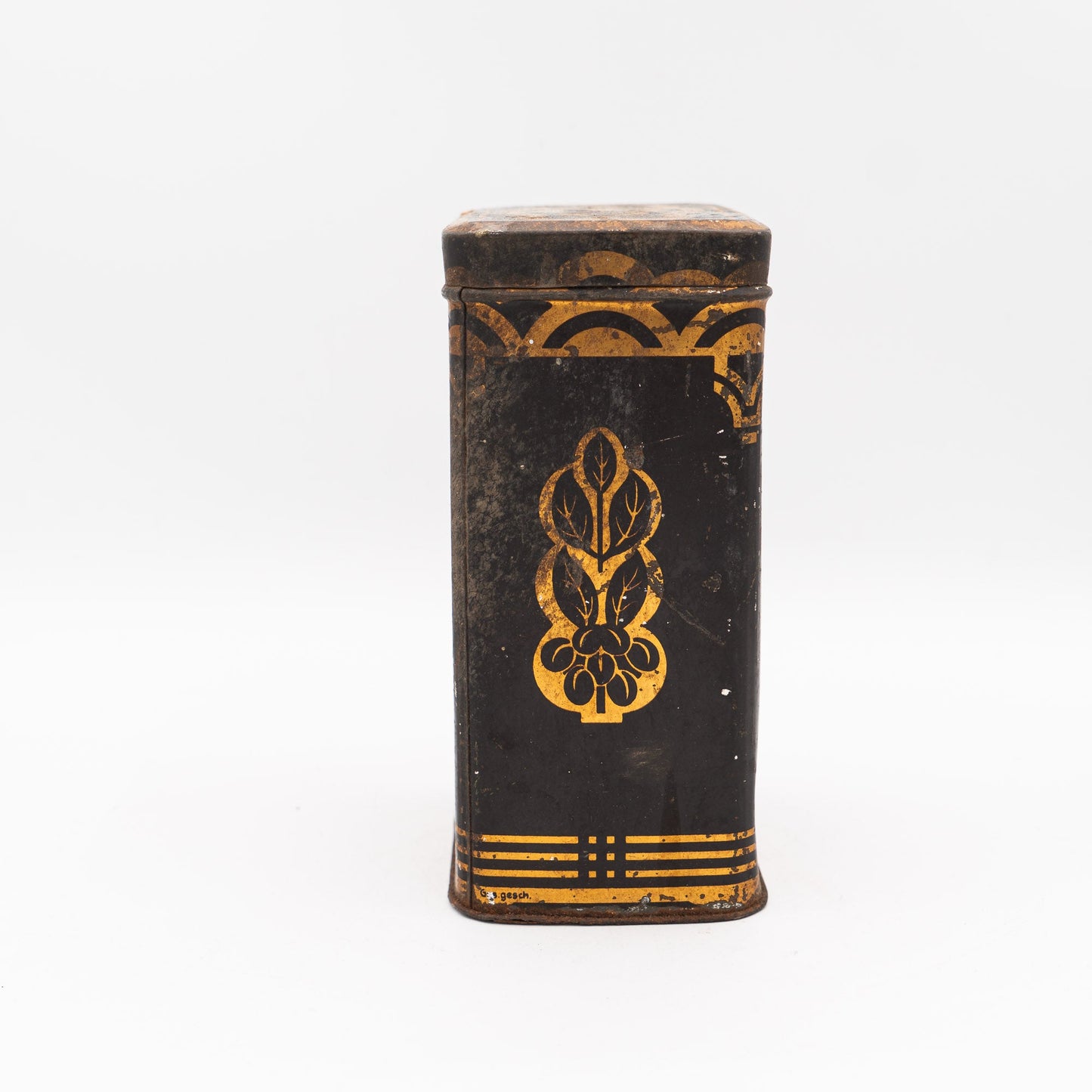The Vintage Tales
Lehmann Kaffee Advertising Tin, Leipzig - Black & Gold - 1940s–50s
Lehmann Kaffee Advertising Tin, Leipzig - Black & Gold - 1940s–50s
Couldn't load pickup availability
A handsome German coffee tin in deep black with gilt graphics for C. G. Lehmann – Kaffee-Gross-Rösterei, Leipzig C1. The bold typography, scalloped borders and coffee-bean sprigs are classic mid-century German shop-counter style. Nicely lived-in with honest patina, this tin brings instant café character to open shelves and coffee stations—and it’s a lovely prop for styling or storage.
- Material: Lithographed tinplate
- Maker: C. G. Lehmann, Kaffee-Gross-Rösterei (coffee roastery)
- Motif: Gold typography, scalloped borders, coffee cup, and coffee-bean sprigs
- Style: Art Deco to Mid-Century commercial advertising
- Place of Origin: Leipzig, Germany
- Mark: Printed “Frisch gerösteter Kaffee – C. G. Lehmann – Leipzig C1 – Fernruf 20604”
- Date of Manufacture: c. 1940s–1950s (the use of “Fernruf” telephone wording supports the dating)
- Condition: Good vintage condition with age-consistent wear: scattered scuffs, scratches, and spots of surface oxidation; light dings to edges and base; rim wear; interior with age marks. Hinged lid opens and closes well. Please see photos for details.
Share
- Worldwide Shipping
- Secure Packaging
- Loving Curation








Origin & Maker
From the late 19th to mid-20th century, lithographed tinplate was the star of shop counters.
Brands commissioned reusable tins for tea, cocoa, biscuits, coffee, tobacco, and remedies, supplying grocers, chemists, and tobacconists with eye-catching point-of-sale display.
Brilliant colour printing, crisp typography and period styling - Art Nouveau swirls, Deco geometry, later mid-century bolds -turned everyday containers into miniature billboards. Airtight lids kept contents fresh while the tins lived on in pantries, so the advertising lingered in homes for years.
Produced across Britain and Europe (notably France and Germany) as well as the USA, these sturdy survivors now carry gentle wear and patina that testify to honest use - exactly the authenticity collectors cherish.
Blog posts
View all-

A Serendipitous Morning at the Rue de Bretagne ...
There are few joys in life that match the thrill of stumbling upon a hidden treasure, and for me, flea markets hold that magical allure. One of my favourite flea...
A Serendipitous Morning at the Rue de Bretagne ...
There are few joys in life that match the thrill of stumbling upon a hidden treasure, and for me, flea markets hold that magical allure. One of my favourite flea...
-

Emile Bourgeois and "Le Grand Dépôt" in Paris
Recently, I found this stunning Sarreguemines wash set. It was at the Brocante in Belfort, France. On this day, we had got up at 4 AM to be there in...
Emile Bourgeois and "Le Grand Dépôt" in Paris
Recently, I found this stunning Sarreguemines wash set. It was at the Brocante in Belfort, France. On this day, we had got up at 4 AM to be there in...
-

The Legacy of Robert Haviland: A Journey from N...
The story of Robert Haviland porcelain is one of artistry, transatlantic ambition, and enduring heritage. It begins in the mid-19th century when David Haviland, an enterprising New Yorker, founded Haviland...
The Legacy of Robert Haviland: A Journey from N...
The story of Robert Haviland porcelain is one of artistry, transatlantic ambition, and enduring heritage. It begins in the mid-19th century when David Haviland, an enterprising New Yorker, founded Haviland...











